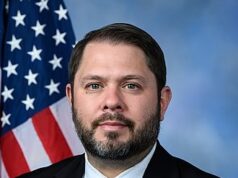FHFA RELEASES FINAL DUTY TO SERVE RULE FOR FANNIE MAE AND FREDDIE MAC
WASHINGTON, D.C. – (RealEstateRama) — The Federal Housing Finance Agency (FHFA) yesterday released its final “Duty to Serve” rule requiring the Government Sponsored Enterprises (GSEs) Fannie Mae and Freddie Mac to support lending for housing for low-income families in three underserved segments of the housing finance market: manufactured housing, affordable housing preservation, and rural areas. The rule fulfills a statutory mandate placed on the GSEs by the Housing and Economic Recovery Act of 2008.

FHFA also released a factsheet summarizing the rule. The rule will take effect January 2018.
Underserved Market Plans
Starting next year, FHFA will require both GSEs to submit to it once every three years an Underserved Market Plan outlining how they to intend help support housing for very low-, low-, and moderate-income families (those earning 100 percent of area median income or below) in the specified markets. The plans will be subject to review by FHFA and public comment. In its comments on FHFA’s December 2015 proposed Duty-to-Serve rule, NCSHA urged FHFA to allow the plans to be opened to public comment so that state HFAs and others with on-the-ground experience can share their input.
FHFA and the GSEs will be hosting a series of listening session across the country to solicit stakeholder feedback on Fannie Mae’s and Freddie Mac’s Underserved Market Plans. Information on these sessions is available on a special webpage FHFA has set up devoted to the Duty-to-Serve rule.
Housing Credits and Housing Bonds
In the proposed rule, FHFA sought comment on whether it should allow the GSEs to resume equity investments in Low Income Housing Tax Credits (Housing Credits), and whether the GSEs should receive Duty-to-Serve Credit for such investments. NCSHA recommended that FHFA allow the GSEs to make such investments, which would help boost liquidity in the Housing Credit market and increase the amount of equity available for developments in underserved markets.
The final rule makes no determination about whether the GSEs can resume Tax Credit Investments. The rule does say that, should FHFA allow the GSEs to make Housing Credit investments, the firms could receive Duty-to-Serve credit for Housing Credit equity investments in rural areas (the rule’s definition of a rural area is described below).
The final rule also allows Fannie Mae and Freddie Mac to apply purchases of housing bonds to their loan purchase requirements, as long as the GSEs can demonstrate the loans financed by the bonds or the underlying securities assist very low-, low- or moderate-income families in a particular underserved market. The GSEs also will be allowed to claim towards their loan purchase requirements any credit enhancement they provide on housing bonds to guarantee that investors receive timely payments. This is nearly identical to language included in the proposed rule. NCSHA expressed strong support for this provision in its comments.
Manufactured Housing
The rule requires both GSEs to adopt policies that help eligible borrowers purchase manufactured homes titled as real estate. In addition, both firms will be eligible to receive Duty-to-Serve credit for purchasing manufactured housing loans titled as personal property, known as chattel loans. In order to receive credit for purchasing chattel loans, the GSEs will have to initially set up pilot programs that include consumer protections. FHFA will review and approve each program. If FHFA determines that the pilot program has performed successfully, the GSEs will be allowed to continue to receive credit for purchasing chattel loans. NCSHA recommended that FHFA allow the GSEs to receive credit for supporting responsibly underwritten chattel loans, which, in certain circumstances, represent the only homeownership opportunity available to consumers.
The rule also mandates that the GSEs work to increase their purchase of loans that support certain manufactured housing communities, including those communities owned by their residents, nonprofits or government agencies or instrumentalities. NCSHA supported this provision of the proposed rule, noting that several HFAs finance such communities as a way of preserving them and protecting their residents.
Affordable Housing Preservation
The rule requires the GSEs to increase their support of the secondary market for loans that finance the preservation of single-family and multifamily affordable homes. This includes loans that finance the preservation of affordable housing that was developed through a number of federal housing programs, including the Housing Credit, Section 8 Rental Assistance, USDA Section 515 Rural Housing, and Section 202 Housing for the Elderly. The final rule also encourages the GSEs to work with “comparable state and local housing programs,” including those administered by state HFAs, and include such activities in their Underserved Market Plans. The rule also directs the GSEs to develop strategies for purchasing pools of small bank loans that finance small multifamily properties (those between 5 and 50 units), energy retrofit loans for affordable single-family and multifamily housing, eligible shared-equity homeownership loans, and public housing properties that use HUD’s Rental Assistance Demonstration Program.
In the proposed rule, FHFA would have allowed the GSEs to receive Duty-to-Serve credit for supporting affordable housing preservation by purchasing construction loans to build new affordable multifamily properties. NCSHA opposed this proposal, arguing that the GSEs already purchase a substantial amount of new construction loans for affordable housing. Allowing them to receive credit for such activities would diminish their incentive to support other preservation projects.
Under the final rule, the GSEs will only be able to claim Duty-to-Serve credit for supporting new affordable multifamily housing construction when the loan supports the construction of an property with an affordable housing subsidy that is directly replacing another property with the same subsidy, or when the loan supports the construction of a property developed under state and local government affordable housing programs and abatements that include affordable housing restrictions.
Rural Housing
The firms will also be required to engage in activities that increase the availability of affordable housing opportunities for lower income families in rural areas. For the purposes of the rule, “rural areas” are defined as those census tracts outside of a Metropolitan Statistical Area (MSA) as designated by the Office of Management and Budget, or census tracts in an MSA, but outside of the MSA’s Urbanized Areas and Urban Clusters, that have a housing density of 64 housing units per square mile or less. The rule also establishes a duty for the GSEs to support credit for high-needs rural areas, such as the Lower Mississippi Delta, and high-needs rural populations, such as Native Americans and seasonal migrant workers.
Extra Credit for Residential Economic Diversity
For each market segment, the GSEs are eligible to receive additional credit toward meeting their duties for activities that lessen the economic isolation of very-low, low-, and moderate-income families, such as activities supporting mixed-income housing or housing for lower-income families in high opportunity areas. Such activities would not be mandatory.
The primary definition used to determine whether housing is located in a “high-opportunity area” will be whether it is located in a “Difficult to Develop Area” (DDA), as designated by HUD for Housing Credit program administration. At the urging of NCSHA and others, FHFA will allow the GSEs to also utilize the definition of “high-opportunity” used by states in their Housing Credit Qualified Allocation Plans (QAPs), as long as the QAPs meet certain standards. FHFA will release draft evaluation guidance early next year that will outline the criteria that a QAP’s definition of “high opportunity area” will have to meet to qualify under the Duty-to-Serve rule. The draft guidance will be open for public comment.













